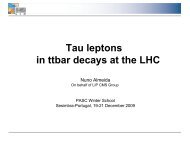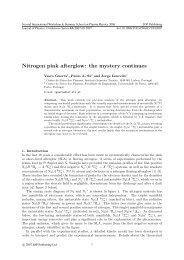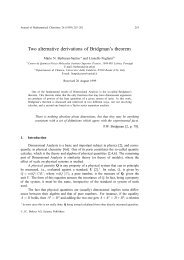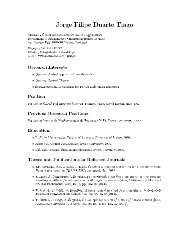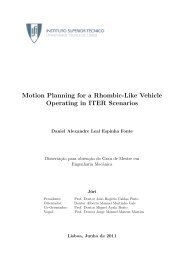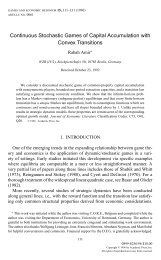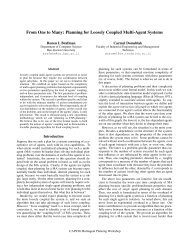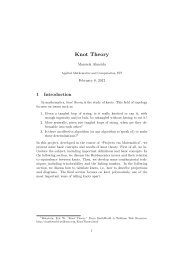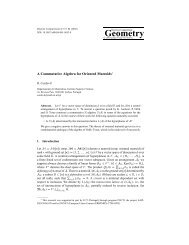Introduction to supergeometry
Introduction to supergeometry
Introduction to supergeometry
Create successful ePaper yourself
Turn your PDF publications into a flip-book with our unique Google optimized e-Paper software.
while on the other hand,<br />
holds. Using the flow equation, we obtain<br />
X i (x(t)) = X i (x) + t<br />
n∑<br />
j=1<br />
∂X i<br />
∂x j vj<br />
v i = X i (x)<br />
and<br />
n∑<br />
j=1<br />
∂X i<br />
∂x j vj = 0,<br />
which combines in<strong>to</strong><br />
n∑<br />
j=1<br />
∂X i<br />
∂x j Xj = 0 ⇔ [X, X] = 0.<br />
So [X, X] = 0 turns out <strong>to</strong> be a necessary and sufficient condition for the integrability of X. This<br />
conclusion can be seen as a special instance of Frobenius Theorem for smooth graded manifolds,<br />
see [6].<br />
4 Graded symplectic geometry<br />
4.1 Differential forms<br />
Locally, the algebra of differential forms on a graded manifold M is constructed by adding new<br />
coordinates (dx i ) n i=1 <strong>to</strong> a system of homogeneous local coordinates (xi ) n i=1 of M. Moreover, one<br />
assigns the degree |x i | + 1 <strong>to</strong> dx i .<br />
Remark 4.1.<br />
1. If x i is a coordinate of odd degree, dx i is of even degree and consequently<br />
(dx i ) 2 ≠ 0.<br />
2. On an ordinary smooth manifold, differential forms have two important properties: they<br />
can be differentiated – hence the name differential forms – and they also provide the right<br />
objects for an integration theory on submanifolds. It turns out that on graded manifolds,<br />
this is no longer true, since the differential forms we introduced do not come along with<br />
a nice integration theory. To solve this problem, one has <strong>to</strong> introduce new objects, called<br />
‘integral forms’. The interested reader is referred <strong>to</strong> [14].<br />
A global description of differential forms on M is as follows: the shifted tangent bundle T [1]M<br />
carries a natural structures of a dg manifold with a cohomological vec<strong>to</strong>r field Q that reads<br />
n∑<br />
dx i ∂<br />
∂x i<br />
i=1<br />
in local coordinates. The de Rham complex (Ω(M), d) of M is C ∞ (T [1]M), equipped with the<br />
differential corresponding <strong>to</strong> the cohomological vec<strong>to</strong>r field Q.<br />
Remark 4.2. The classical Cartan calculus extens <strong>to</strong> the graded setting:<br />
8




